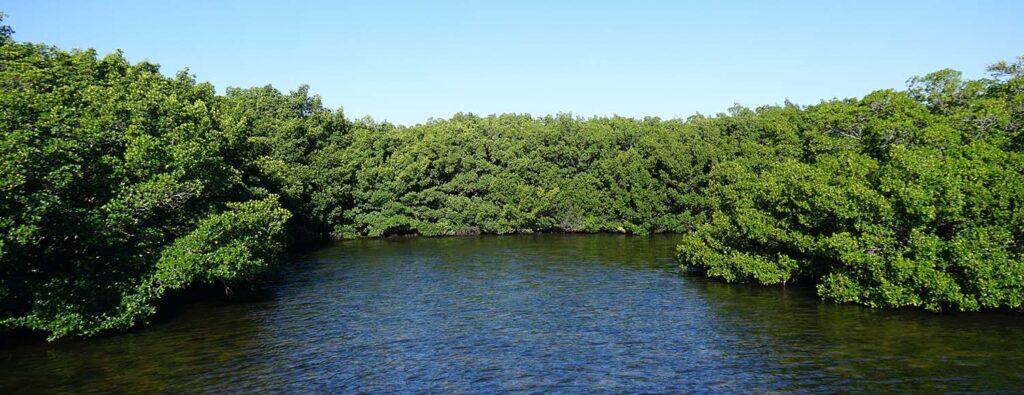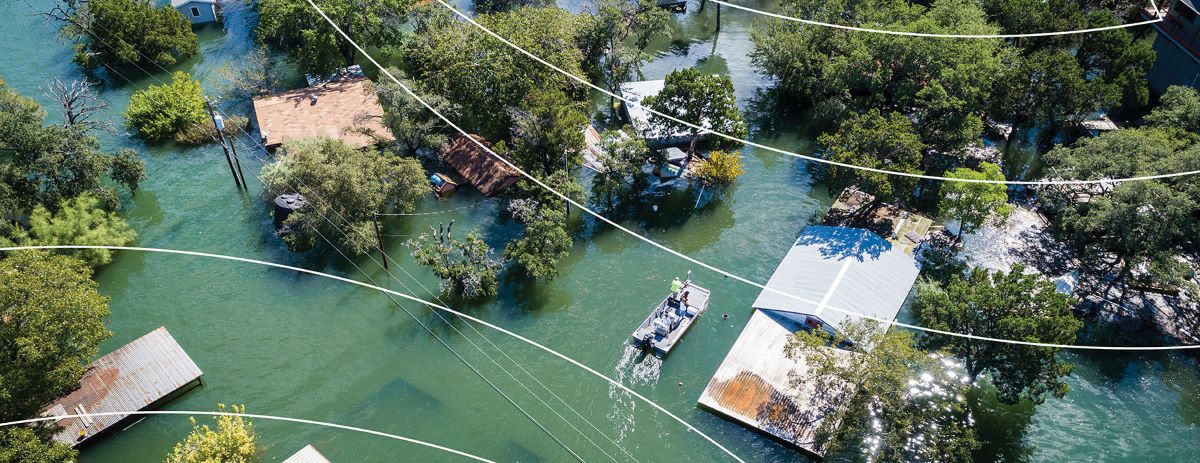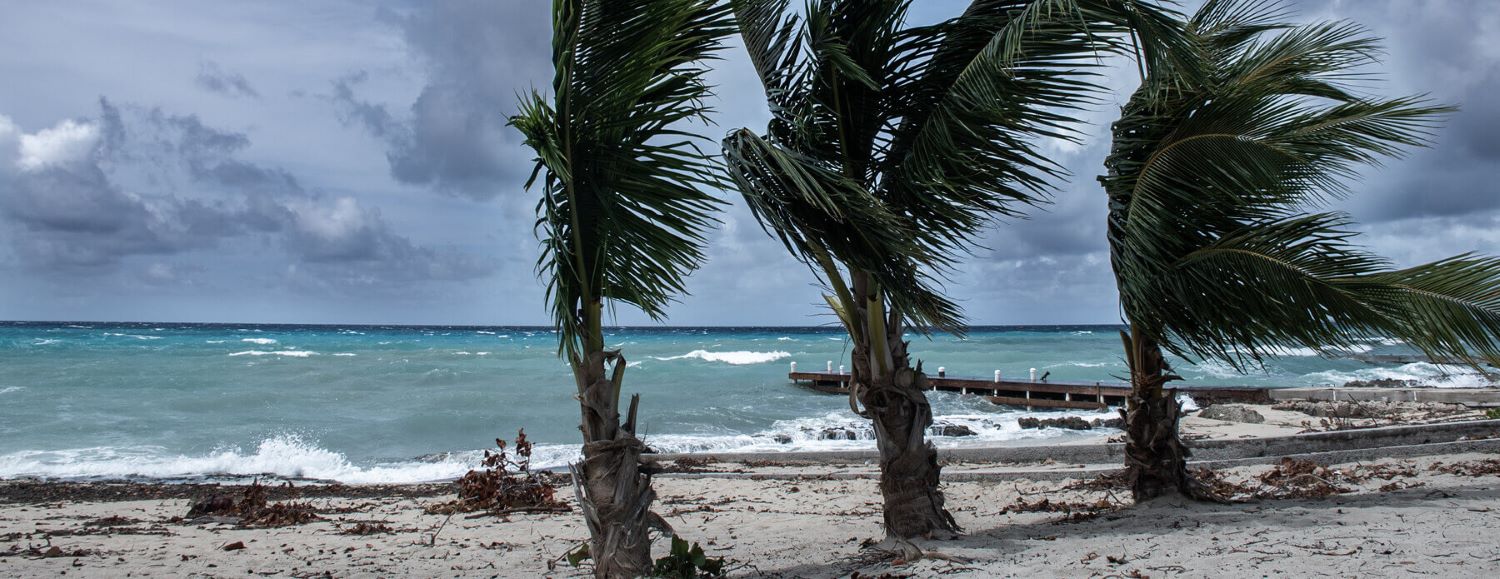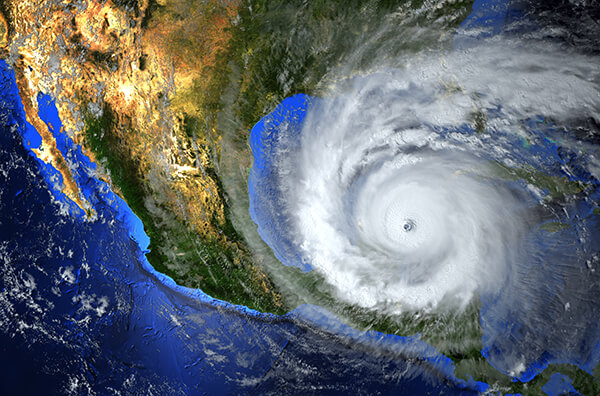Did you know that mangroves are among Earth’s most biologically important ecosystems? Mangrove forests are comprised of trees, shrubs, and palms along the equator between 25° North and South latitudes. About 42 percent of the world’s mangroves are found in Asia, with 21 percent in Africa, 15 percent in North and Central America, 12 percent in Australia and the islands of Oceania, and 11 percent in South America – areas prone to geophysical and hydrological disasters.
This delicate and vital ecosystem has adapted to the harsh conditions of high salinity, warm air and water temperatures, extreme tides, muddy, sediment-laden waters, and oxygen-depleted soils and serves as a first line of defense against hurricanes and tsunamis by dissipating wave and wind energy.
This article explores the significance of mangroves in disaster mitigation, their ability to safeguard against storms, reduce erosion, and mitigate flooding.
Storm Protection: Mangroves are a natural barrier against storms, particularly in coastal regions prone to hurricanes, cyclones, and typhoons. The dense root systems of mangrove trees effectively dissipate wave energy and reduce the force of storm surges, shielding inland areas from destructive waves and minimizing coastal erosion. Mangroves act as a buffer zone, absorbing the impact of strong winds and reducing the vulnerability of coastal communities to damage and destruction caused by extreme weather events.
Erosion Control: Coastal erosion is a widespread issue, threatening infrastructure, ecosystems, and human settlements. Mangroves combat erosion by stabilizing shorelines with their intricate root systems. The complex network of roots acts as a natural breakwater, trapping sediments and reducing the impact of wave action. This process helps to maintain the integrity of coastal landforms, protect adjacent ecosystems such as coral reefs and seagrass beds, and preserve the habitat of numerous marine species.
Flood Mitigation: Mangroves contribute significantly to flood mitigation, especially during heavy rainfall and storm events. The dense vegetation of mangrove forests acts as a natural sponge, absorbing and storing excess rainwater. “The intricate root structures slow the water flow, allowing sediments and nutrients to settle and reducing the speed and volume of downstream floodwaters. By acting as a natural water retention system, mangroves help regulate water levels and prevent or alleviate flooding in coastal areas,” said Michael Gallagher, Senior Director, Mitigation for Tidal Basin.
Carbon Sequestration and Climate Regulation: Mangrove forests are among the most efficient carbon sequestration and storage ecosystems. Their dense vegetation absorbs and stores substantial amounts of carbon dioxide, thus mitigating climate change impacts. The Washington Post reported that the world’s mangroves sequester 75 billion pounds of carbon a year. By preserving mangroves, we can help reduce greenhouse gas emissions and alleviate the adverse effects of global warming. Additionally, mangrove ecosystems contribute to the regulation of local climates, reducing temperatures and providing shade, which is particularly important in urban coastal areas. Acre per acre, mangroves “are the world champions of carbon sequestration,” says Neil Saintilan, an ecologist at Macquarie University in Sydney.
Biodiversity and Fisheries: Mangroves provide critical habitats for various plant and animal species. The intricate root systems offer shelter and breeding grounds for many marine organisms, including fish, crustaceans, and mollusks. The interconnected mangrove ecosystem supports a complex food web, sustaining local fisheries and providing livelihoods for coastal communities. Preserving mangrove habitats ensures biodiversity conservation and sustainable management of coastal resources.
Mangroves are invaluable ecosystems with exceptional resilience and need our protection. The plants are disappearing quickly because of human development, and over a quarter of the Earth’s original mangrove forests have now been lost. Rising sea levels kill off mangroves — and losses could increase as the climate changes and sea levels rise even more. Only 6.9 percent of mangrove forests are protected by law. Recognizing the significance of mangroves and implementing measures to conserve and restore these habitats is essential for sustainable coastal development and disaster risk reduction efforts.
“A world without mangroves would likely mean a world with fewer fishes, more coastal damage, and unknown ecosystem and public health consequences related to changes in pollutant, sediment, and carbon cycles,” Alfredo Quarto, program & policy director/co-founder of the Mangrove Action Project.



